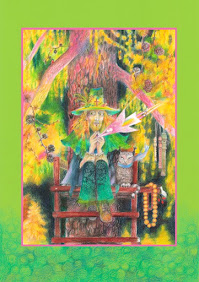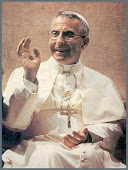I'm currently preparing an article for the new progressive blog, Open Tabernacle, entitled A Pilgrim in Rome: Living with Joy on the Margins, which I hope to finish by next weekend. The article will discuss my reflections on a recent trip to Rome and the Vatican, as well as visits to some other noteworthy Catholic pilgrimage sites in Europe. Part of these reflections include my reaction to the ironic contrast between the final resting place of Pope John Paul I, one of the gentlest, most self-effacing and saintliest popes in centuries and his successor, John Paul II, who expended great energy inculcating and nurturing the cult of personality surrounding his own person, turning himself into a mega rock star and a locus of massive projection on the part of millions.
Contrast the final resting places of these two successive pontiffs:
JPII: The photo does not take in the velvet cord that marks off an area for prayer outside the 'sanctuary' nor the permanent guard stationed here to maintain order.
JPI: Set to the side of the walkway and ignored by all the tourists and note the absence of dates for his 'reign.' A blip on the radar screen, yet the Pope who should have been....and the true example of collaborative, discerning, pastoral leadership. The genuine saint is ignored, the rock star with large elements of unpurified ego (if my uncharitable judgmentalism can be forgiven) receives the adulation of the masses. If this were all there was to the story, then Marx would be vindicated and this would be a prime example of the delusional power of the "opiate of the masses." But the story has yet to be concluded and the Spirit is at work in those marginal, desert places of the world that give rise to prophets with no recognizable official authority and no endorsement from the great religious institutions - such as the wandering Hebrew prophet from a hill town in Palestine who emerged out of no where and who startled the religious authorities by his shocking iconoclasm. "By what authority do you do these things?"








 ;
;
 k
k

























